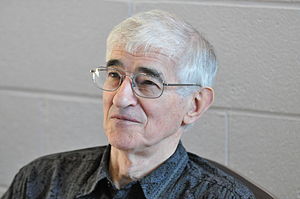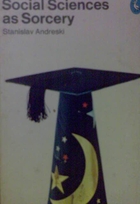
Early in the third century Hippolytus (“Philosophumena”, VII, xxx) refers to Mark as ho kolobodaktulos, i.e. “stump-fingered” or “mutilated in the finger(s)”, and later authorities allude to the same defect. Various explanations of the epithet have been suggested: that Mark, after he embraced Christianity, cut off his thumb to unfit himself for the Jewish priesthood; that his fingers were naturally stumpy; that some defect in his toes is alluded to; that the epithet is to be regarded as metaphorical, and means “deserted” (cf. Acts 13:13). (From the New Advent Catholic Encyclopedia)
Some have suggested that the nickname was used to refer to the crude Greek style of his Gospel. WikiAnswers speaks of Mark’s Gospel being “written clumsily and ungrammatically, in an unpolished Greek style”.
It is sometimes said that Mark’s Gospel was written for oral presentation, even dramatic performance, and that this explains certain features of the Gospel’s style. Maybe, but Greek tragedies were written for oral presentation, too, and their language is polished; Seneca also wrote tragedies that were meant to be read aloud and used some of the most bombastic and flowery language imaginable just for this purpose.
So oral performance alone cannot be the explanation for the oddities of his Greek.
Dennis MacDonald suggests that Mark was writing an “anti-epic”, and deliberately cultivated an “anti-polished/poetic” style of “natural speech” to match his anti-epic theme.
(It might seem odd to some to speak of “deliberately cultivating” a “natural speech style”. But it is not easy to express the way we really talk in writing. For most of us it takes effort. Pick up the pen, sorry, sit at the keyboard to write just what we’ve been talking about and bang, for a few moments at least writer’s block as likely as not hits. And the words we type rarely come out just the way we would say them.)
Gilbert Bilezikian has argued that many of the unusual features of Mark’s style can be explained as a mix of the spoken language of everyday life and literary devices characteristic of dramatic performances (The Liberated Gospel: a Comparison of the Gospel of Mark and Greek Tragedy). This post looks at Bilezikian’s explanations for a wide range of the unusual features of Mark’s style. (Where technical terms such as “aorist tense” are used I link to off-site explanatory notes; I also link to the Bible Study Tools Lexicon to enable comparison of frequency of use of certain words across the Gospels.)
I also refer to additional insights by Paul Nadim Tarazi.
I begin immediately with two of my favourite Markan so-called infelicities of style:
Like this:
Like Loading...







 James McGrath has given Dale C. Allison’s latest book, Constructing Jesus: Memory, Imagination and History, a bit of a bad press in his recent review of it. He famously wrote that Allison explains how a historian can learn the true sense of what a historical person was about through studying fictional material about that person. (See
James McGrath has given Dale C. Allison’s latest book, Constructing Jesus: Memory, Imagination and History, a bit of a bad press in his recent review of it. He famously wrote that Allison explains how a historian can learn the true sense of what a historical person was about through studying fictional material about that person. (See  Why is theology with its arcane scripts from ages long dead still even tolerated in twenty-first-century institutions of higher learning alongside geochemistry and biotechnology and disciplines that use synchrotrons and things? In Australia at least public universities rely on funding that is awarded in response to the research output that can be demonstrated to provide some
Why is theology with its arcane scripts from ages long dead still even tolerated in twenty-first-century institutions of higher learning alongside geochemistry and biotechnology and disciplines that use synchrotrons and things? In Australia at least public universities rely on funding that is awarded in response to the research output that can be demonstrated to provide some 